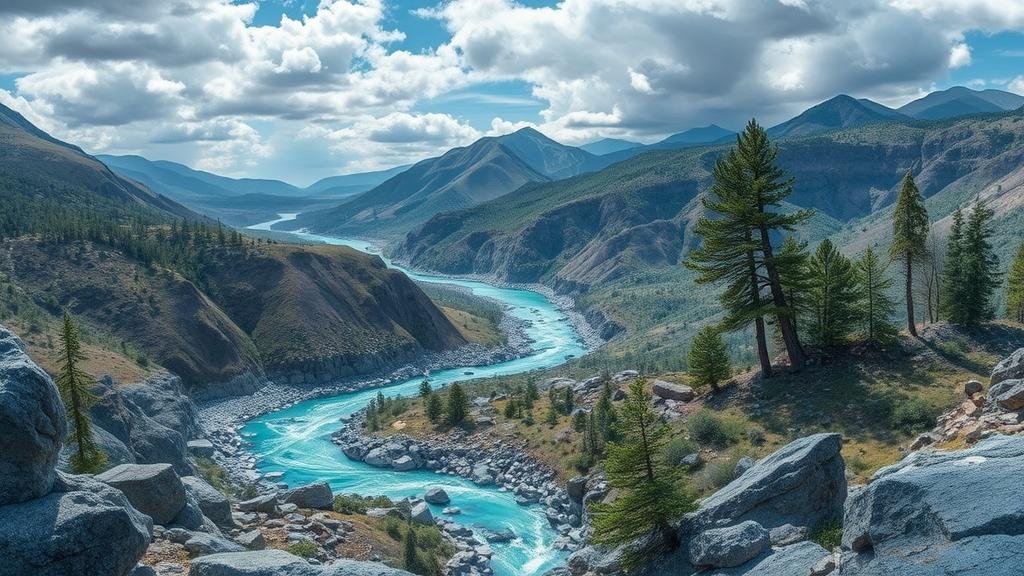Sapphire Dreams: Unearthing Treasures in Rugged River Valleys
Sapphire Dreams: Unearthing Treasures in Rugged River Valleys
For rockhounds and mineral collectors, the thrill of discovery is one of life’s greatest joys. Nestled amidst the rugged river valleys, sapphires have beckoned treasure hunters for generations. Not only does the search for these dazzling gemstones provide a challenge and adventure, but it also offers insight into geological processes. This article explores the significance of sapphires in river valleys, their geological origins, tips for collectors, and how to engage with this captivating hobby.
The Allure of Sapphires
Sapphires, a variety of corundum, are not just known for their stunning hues, primarily blue, but also for their remarkable hardness, rating 9 on the Mohs scale. This durability makes them suitable for both industrial uses and fine jewelry. Interestingly, the monetary value of sapphires has seen a significant increase; at the beginning of 2023, the global sapphire market was valued at approximately $1 billion, expected to grow at a CAGR of 6% through 2028.
The Geological Origins of Sapphires
Sapphires form under high-pressure and high-temperature conditions within metamorphic rocks. Over time, erosion can transport these stones from their original locations into riverbeds. The rugged river valleys provide an optimal location for sapphire hunting, as geological forces help concentrate them in particular areas. For example, the Yogo Sapphire mines in Montana and the river gravels of Sri Lanka are famous for producing high-quality sapphires, illustrating how nature molds these treasures.
Finding Sapphires in River Valleys
The act of searching for sapphires can be rewarding, but it requires knowledge and preparation. Here are practical tips for collectors:
- Research Locations: Identify known sapphire-producing regions. Notable locations include the gem-rich gravels of the Montana Sapphire Belt or the riverbeds of Madagascar.
- Understand the Season: The best time for mineral hunting often follows heavy rainfall, as this can expose new stones by washing away sediments.
- Use the Right Tools: Equip yourself with a small shovel, a screen for sifting through gravel, and a bucket for collection. A headlamp may also be useful for early morning or late evening searches.
- Know the Weight: A standard one-carat sapphire measures about 6.5 mm in diameter. Recognizing this size can aid in spotting potential finds.
- Check for Clarity: Inspect stones for transparency; sapphires with few inclusions can command higher prices.
Understanding Identification
Identifying sapphires among similar gemstones can be challenging. Here are key identifiers:
- Color: Sapphires are predominantly blue but can also be found in pink, yellow, and green. The hue should be rich and vibrant.
- Hardness: Use a scratch test; sapphires will not be easily scratched by materials like quartz or glass.
- Refractive Index: Sapphires exhibit a refractive index between 1.76 and 1.77–testing tools can assist in determining this.
Environmental Considerations
While the thrill of searching for sapphires is enticing, it is crucial to engage in responsible collecting. Adhere to local regulations and respect the environment. Be aware that some areas may have restrictions on mining or collecting natural resources. Sustainable practices include:
- Leave No Trace: Collect only what you need and maintain the natural landscape.
- Educate Others: Share knowledge about sustainable and ethical collecting with fellow rockhounds.
Conclusion: The Collectors Journey
The pursuit of sapphires in rugged river valleys is a union of adventure, education, and passion for geology. By investing time in research, preparation, and ethical collecting, enthusiasts can enhance their experience while contributing positively to the gem-hunting community. Whether you are a seasoned collector or a curious beginner, river valleys brimming with potential treasures await. Equip yourself with knowledge, tools, and patience, and embark on your sapphire dreams today.



